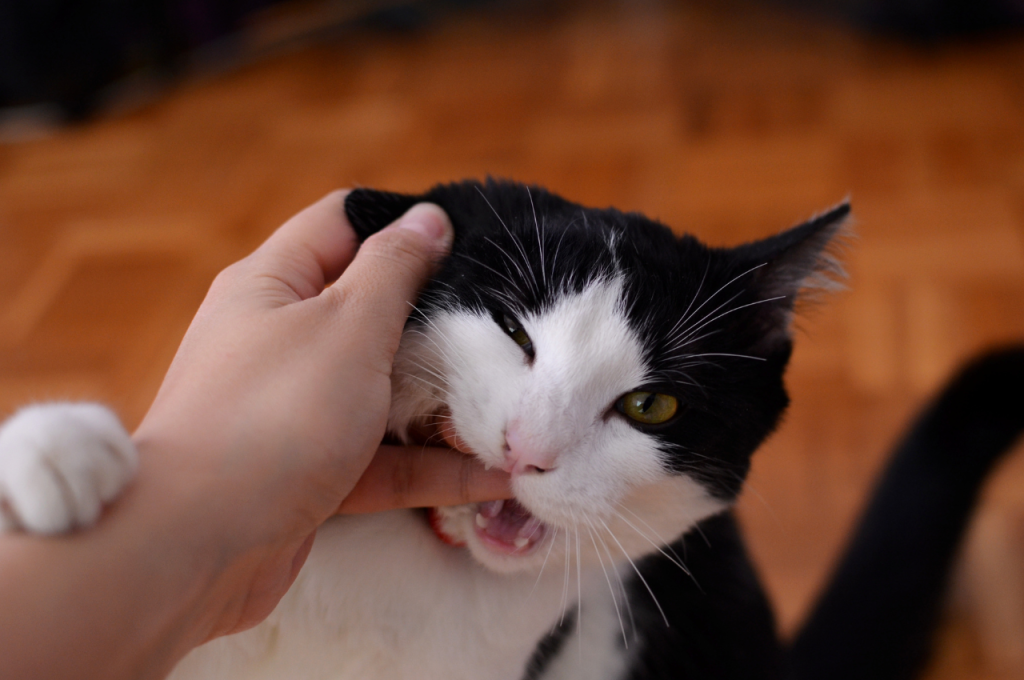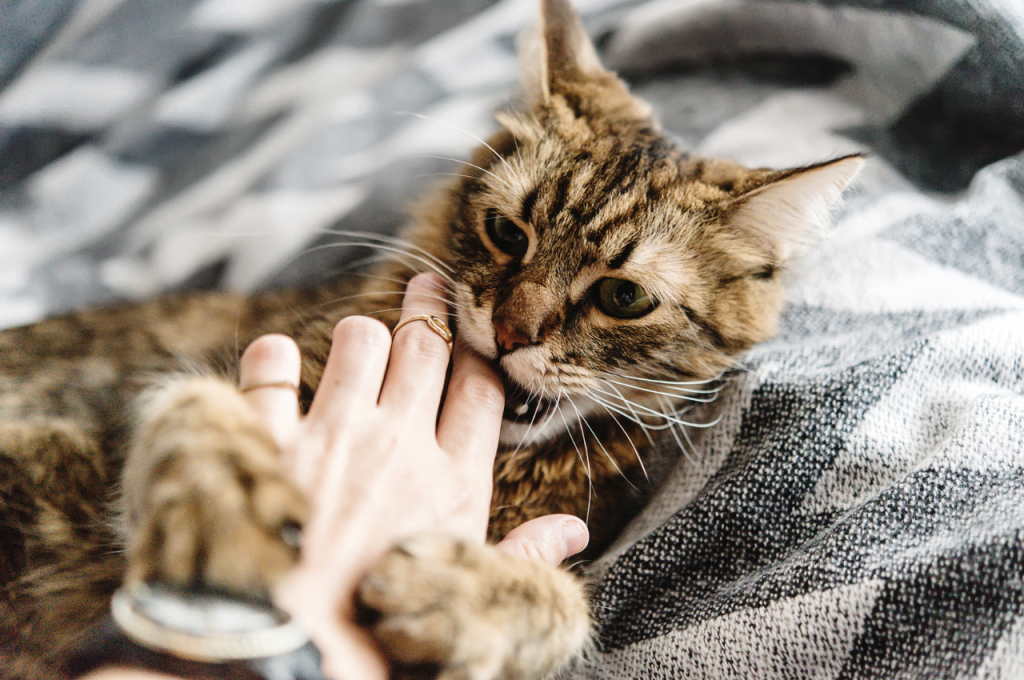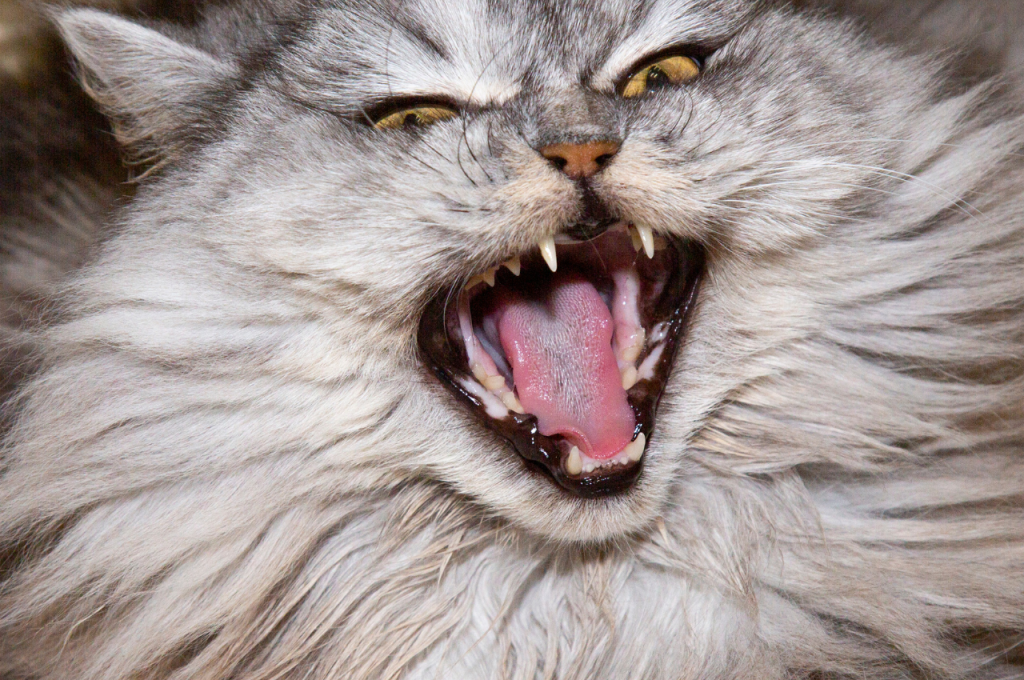To train your cat to stop biting and scratching, use positive reinforcement techniques such as rewards and redirection. Redirect their energy towards appropriate toys and provide plenty of mental and physical stimulation to prevent boredom-related biting and scratching behaviors.
Cats are intelligent and independent animals, but they can also exhibit challenging behaviors like biting and scratching. These behaviors can be a result of various factors such as playfulness, fear, or stress. By understanding the root cause of your cat’s behavior, you can effectively address and modify their actions.
Implementing positive reinforcement techniques, setting clear boundaries, and providing proper toys and scratching posts can help train your cat to stop biting and scratching unwanted items. With patience and consistency, you can foster a harmonious relationship with your furry friend.
Understanding Cat Behavior
Train your cat to stop biting and scratching with a deep understanding of their behavior. Discover effective techniques to create a well-behaved feline companion.

Understanding cat behavior cats are unique creatures with instinctual behaviors that drive their actions.
Exploring The Natural Instincts of Cats
Cats are natural hunters and may exhibit aggressive behaviors like biting and scratching. Their instincts drive them to play, hunt, and protect their territory.
Identifying The Triggers for Biting and Scratching
Physical discomfort, fear, or being overstimulated can trigger biting and scratching. – Understanding these triggers will help pinpoint areas for behavior correction. Understanding your cat’s behavior is crucial in training them to stop biting and scratching. Let’s delve deeper into the instincts of cats to better grasp their behavior patterns.
Creating A Safe and Enriching Environment
Creating a safe and enriching environment for your cat is key to preventing biting and scratching behavior. Cats often act out due to stress or boredom, so providing a stimulating and secure space is essential.
Providing Proper Scratching Surfaces
- Cats need appropriate outlets for their natural scratching instincts.
- Place scratching posts or pads strategically around your home.
- Ensure the surfaces are sturdy and tall enough for stretching.
Offering Interactive Toys and Playtime
- Engage your cat in daily interactive play sessions.
- Use toys that mimic hunting behaviors to keep them entertained.
- Rotate toys regularly to keep them engaging and stimulating.
Positive Reinforcement Training Techniques
Teach your cat to use positive reinforcement techniques to reduce biting and scratching behavior effectively. Reward good behavior with treats or toys to encourage desired actions and create a positive association. Consistent training and patience are key to fostering a well-behaved feline companion.
Using Clicker Training for Desired Behavior
Using a clicker as a training tool is an effective positive reinforcement technique to teach your cat the desired behavior. This method involves associating a distinct clicking sound with a reward, creating clear communication between you and your feline friend. To start, follow these simple steps:

- Begin by associating the clicker with treats. Click the device and immediately offer your cat a treat, repeating this sequence several times.
- Once your cat understands that the clicker’s sound means a reward is coming, introduce the desired behavior you want to reinforce. For example, if you want your cat to stop scratching furniture, click as soon as your cat begins to use the scratching post instead.
- Instantly reward your cat with a treat after clicking. This reinforces the positive behavior and helps your cat understand what you expect from them.
- Consistency is key! Continue reinforcing desired behavior with the clicker and treats, gradually reducing treats over time as your cat becomes more proficient in training.
Using this clicker training method along with treats can significantly decrease biting and scratching behaviors in your cat, making your home a peaceful environment for everyone.
Rewarding Alternatives to Biting and Scratching
Instead of focusing solely on stopping unwanted biting and scratching, redirect your cat’s energy towards more appropriate activities. By providing rewarding alternatives, you can channel your cat’s instincts and prevent destructive behavior.
Here are some alternatives you can try:
- Interactive toys: Engage your cat with toys that require mental and physical stimulation, such as puzzle toys or treat-dispensing toys.
- Scent enrichment: Introduce different scents, such as catnip or silvervine, to provide sensory stimulation and divert your cat’s attention away from biting and scratching.
- Vertical space: Provide tall cat trees or shelves where your cat can climb, jump, and explore. This vertical space not only offers exercise but also serves as a safe area for your cat to retreat and relax.
- Scratching posts: Offer a variety of vertical and horizontal scratching posts covered in different materials, like sisal or cardboard, to satisfy your cat’s natural need to scratch.
Introducing these rewarding alternatives alongside positive reinforcement training techniques will help redirect your cat’s behavior, creating a harmonious and happy relationship between you and your feline companion. Remember to be patient and consistent in your approach, and always reward and praise your cat for positive actions. With time and perseverance, you can successfully train your cat to stop biting and scratching in no time.
Effective Methods to Deter Biting and Scratching
Implementing environmental deterrents can help discourage your cat from biting and scratching inappropriately. One effective method is to create a positive environment by providing your cat with appropriate toys, scratching posts, and perches. This helps redirect their natural behavior and provides them with appropriate outlets for their energy and instincts. Additionally, you can use double-sided tape or aluminum foil on furniture or surfaces to deter your cat from biting or scratching in those areas. Cats generally dislike the texture of these materials on their paws, which can discourage the behavior.
Another effective method to deter biting and scratching in cats is to use collars, sprays, and repellents. The use of anti-scratch or bitter-tasting sprays can be effective in discouraging biting and scratching behavior. These sprays have a bitter taste that cats find unpleasant and can act as a deterrent. Additionally, there are collars available that emit a harmless but unpleasant spray when your cat displays aggressive behavior, such as biting or scratching. Using these tools can help train your cat to associate the unwanted behavior with a negative outcome, helping deter future biting and scratching.
Addressing Behavioral Issues and Seeking Professional Help
Despite your best efforts, some cats may continue to exhibit biting and scratching behaviors despite training methods. In such cases, it’s essential to address these behavioral issues promptly and seek professional help if needed.
Dealing with Aggression and Anxiety
Dealing with aggression and anxiety in your cat is essential to stop biting and scratching behavior. Providing a safe and comfortable environment for your cat can help reduce stress and aggression. Engaging in interactive play sessions and providing mental stimulation can also alleviate anxiety and reduce aggressive tendencies. Implementing positive reinforcement techniques and identifying triggers for your cat’s aggression can also be effective in addressing behavioral issues.
Consulting with A Veterinarian or Animal Behaviorist
If you are facing challenges in training your cat to stop biting and scratching, it may be beneficial to seek professional help. A veterinarian can help rule out any underlying medical conditions that may contribute to aggressive behavior. Additionally, consulting with an animal behaviorist can provide in-depth insights into your cat’s behavior and offer tailored solutions to address the root cause of the biting and scratching. Professional expertise can play a crucial role in helping your cat overcome behavioral issues and promote a harmonious relationship between you and your feline companion.

Frequently Asked Questions
Here are some questions about your cat to stop biting and scratching:
1. How do you discipline a cat that bites and scathes?
To discipline a cat that bites and scratches, use positive reinforcement, redirect their behavior with toys, or consult a veterinarian for advice. Avoid physical punishment as it can worsen aggression. Consistency, patience, and love in training are key.
2. Do cats grow out of biting and scratching?
Biting and scratching are common in cats, but they can be trained to stop. With proper training and socialization, most cats grow out of these behaviors as they mature. Consistency and patience are key in teaching them appropriate ways to interact and play with humans.
3. How do you teach a cat not to bite you?
To teach a cat not to bite, redirect their focus to a toy or treat. Avoid harsh punishment and provide positive reinforcement for good behavior. Use gentle discipline and consistent training techniques. Seek professional help if the behavior persists.
4. Why does my cat keep biting and scratching himself?
Your cat might be biting and scratching due to fleas, allergies, anxiety, or skin irritation. Regular grooming and flea prevention can help. If the behavior continues, consult a veterinarian for proper diagnosis and treatment.
Conclusion
Training your cat to stop biting and scratching can be achieved by implementing a few key strategies. Consistency, patience, and positive reinforcement are crucial in this process. Remember to redirect their behavior, provide appropriate outlets for their instincts, and establish boundaries.
By using these techniques, you can foster a harmonious relationship with your feline companion and ensure a safer and more enjoyable living environment for both of you.
